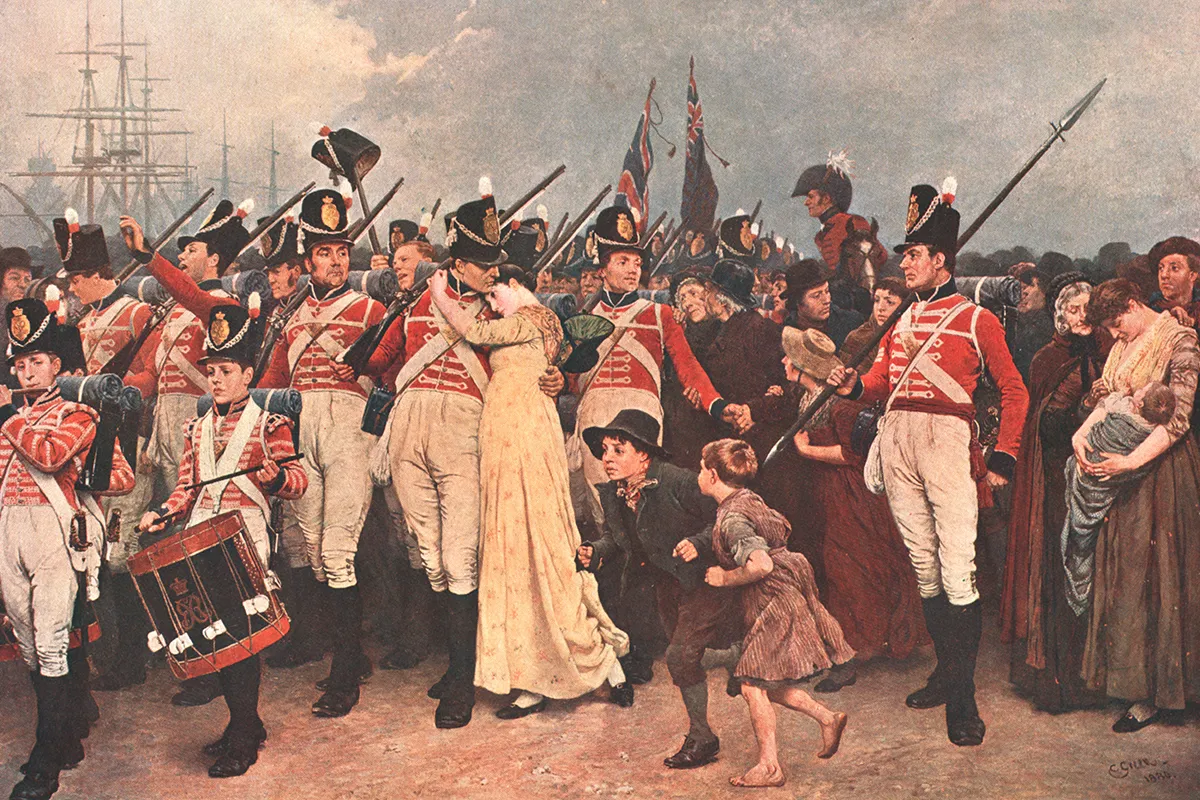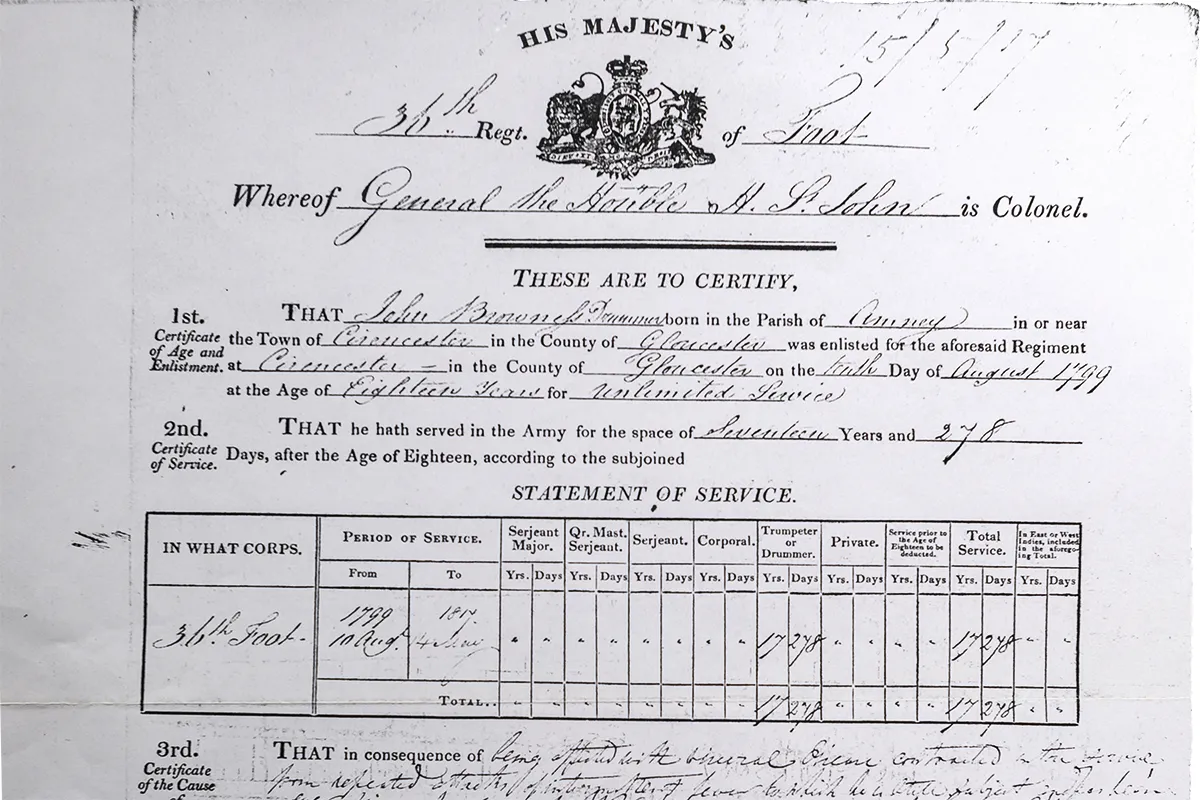One of the joys of family history is an afternoon spent ambling around a country graveyard contemplating the epitaphs, followed by a nose about inside its church reading the memorials to the parish worthies. When Stephen Browness overcame an impasse on his tree to uncover the military service of his 3x great grandfather John Browness, he was determined that he should be commemorated somehow. And that’s precisely what he did.
“I started researching my family history when I was in my early teens and I’m 71 now,” says Stephen, who lives in Whittlesey, Peterborough. It was his great aunt Daisy who ignited his interest. “She had known my great grandfather, George Robert Browness, a soldier in the 23rd Royal Welch Fusiliers, who had fought in the Anglo-Ashanti Wars and served in India and Burma.”
Stephen spent much of his time at what was then the Public Records Office – now The National Archives at Kew (TNA) – using civil registration records and census records to add to the tree he had mapped out with Daisy’s help.
“I found George Robert’s marriage certificate to Annie Howe dated 17 November 1880, and discovered that his father’s name was also George. I later found George senior’s marriage to Mary Foster on 5 February 1854 in St Luke’s, Chelsea.” He also located birth records for their children, and records confirming George Robert’s military service, but could not find George senior’s own birth certificate.
Stephen rightly surmised that he had been born prior to the start of civil registration in 1837. But before the arrival of family history websites, sourcing an individual’s baptism record required you to know their parish of birth, visit the local repository where the parish registers were held and search the microfilmed records.
Before the arrival of family history websites, sourcing an individual’s baptism record required you to search microfilmed records
“I knew that George had lived in London for a good part of his life, so I checked at the Greater London Record Office, Middlesex archives and Kent archives, with no success. I was stumped.”
The breakthrough finally came when he investigated an unfamiliar shelf at the Public Records Office. “One day I was walking out of the building totally demoralised when something in my head said, ‘Look to your right.’ There was a big shelf containing the British Army births and baptisms indexes, and I thought I’d go and take a look.”
Stephen selected the relevant volume. “I found ‘Browness’ and saw all of George Robert’s children’s names, but below this I spotted the entry ‘George, Maidstone, 36th, vol 13, page 9’. ” He sent off for the certificate, and when it arrived was delighted to find it was indeed his great great grandfather’s birth record.
George senior was baptised on 29 June 1814, his parents were named John and Margaret, and the rank of the father was “Drummer”. Right from this first encounter, Stephen was fascinated with John Browness.
Drummers, he discovered, did more than just convey instructions to the soldiers on the battlefield. “They were also stretcher-bearers, and knew basic first aid. They were orderlies for the officers and would clean out their barracks, and administered discipline using the infamous cat o’ nine tails.”

Stephen turned to the record office’s military archives to learn more about John’s army career, and found a discharge certificate.
“It said, ‘John Browness, drummer, born in the parish of Amney’. There’s no such place as Amney, but there is an Ampney Crucis (the ‘p’ is silent) near Cirencester, Gloucestershire.”
John is described as being about 36 years of age, 5 feet 9 inches tall, with brown hair, grey eyes and a fresh complexion. The certificate allowed him to claim a pension as an outpatient at the Royal Hospital Chelsea.

John’s active service ended in 1809 during the Walcheren Campaign in the Netherlands. Walcheren is an island in the Scheldt estuary. It was under French control, and protected the sea route to the major port and shipyards at Antwerp. Many British soldiers who served here contracted a terrible disease that became known as Walcheren Fever. “It either killed you, or laid you low and kept recurring throughout the rest of your life. This is why he was discharged.”
TNA’s muster rolls for John’s regiment showed where he’d served, his pay and the periods he was in hospital, perhaps as a result of the fever (no reason is stated). “John was recruited in Cirencester, Gloucestershire, in August 1799. He enlisted as a private then three years later was promoted to drummer.”
To get an inside view of John’s service, Stephen also consulted autobiographies of soldiers who had served in the same regiment or in the same theatres of war. Combined, these documents helped Stephen paint his own picture of John’s army experience.
To get an inside view of John’s service, Stephen also consulted autobiographies of soldiers
“From August 1800 to June 1802, John was stationed at the garrison on Minorca and served in three tours of duty in Ireland from 1803. It was on one of these that he met his future wife, Margaret McGuire.” The couple went on to have four children together: Maria in 1805, five years before they married on 29 July 1811; Susan in 1812; George in 1814; and James in 1817.
“The period 1806–1809 saw the 36th engaged in three major campaigns. The first was the ill-fated attempt to capture Buenos Aires from Spain, which was then an ally of Napoleon. From South America, John’s regiment was sent to the Iberian Peninsula. Following Napoleon’s seizure of Portugal in late 1807, a British army of 29,000 men under Sir Arthur Wellesley (later the 1st Duke of Wellington) went to the aid of its oldest ally and expelled the French invaders.”
It was after this, in 1809, that the regiment went to Walcheren. “This was my ancestor’s last experience of active service. The fever from which he suffered was a lethal cocktail of malaria, typhus, typhoid and dysentery, and would recur time and time again and for protracted periods requiring hospitalisation.” John’s remaining service was restricted to recruiting duties in England, until his discharge in May 1817.
The fever from which he suffered was a lethal cocktail of malaria, typhus, typhoid and dysentery
In February that year, John took his family back to Ampney Crucis. “They had only been back for six months when Susan died aged five. John, himself, only lived for a further seven years, and was buried on 18 June 1824.” Perhaps the most shocking death was that of his son, James. In April 1829, aged 13, he was crushed to death when a cart overturned. Margaret died of typhus fever in 1845 and was buried as a ‘pauper’.
Finding George’s baptism was key to uncovering John’s story. “Once I knew who he was and what regiment he was in, I could look at the muster rolls and his discharge certificate, and read books about his experiences.”
One thing did niggle Stephen though: “The Army didn’t give lower-rank soldiers medals until the Battle of Waterloo (1815). They were treated miserably.”
John’s body is in an unmarked grave somewhere in the churchyard of the Church of the Holy Rood in Ampney Crucis, where he was baptised – a “base born” child to “Mary Brawnus or Bronas”. Having done so much research into the life of his illiterate, illegitimate forebear who fought so bravely, Stephen felt the need to commemorate John and wondered about erecting a gravestone. However, he had no idea where to put it.
“I’d been inside the church and there are lots of plaques for the great and the good, soldiers of high rank.” Stephen asked the vicar, the Rev Canon John Swanton, whether it would be appropriate to have a plaque installed to commemorate John, and asked him to read his account of his ancestor’s career. “He said that he had had no idea that there was somebody from the village who had done so much, and was 100 per cent behind my idea.”
However, there was a lot of work to be done. “The church is a medieval building, so you can’t just go sticking plaques up willy-nilly. The reverend had to secure the permission of the church authorities, and also commission the plaque.” But then Covid-19 put everything on hold. “It wasn’t until 9 October 2021 that the plaque was finally unveiled. It reads: ‘John Browness of Ampney Crucis, 1784–1824, Drummer, 36th Herefordshire Regiment of Foot during the Napoleonic Wars.’ It felt really good.
“I gave a presentation to the congregation, which comprised both local villagers and members of my family. Three British Army Napoleonic re-enactors helped with the narrative and played several contemporaneous tunes on fife and drums.”
So how does Stephen feel about John now? “As the Rev Swanton said during the ceremony, ‘This villager was an ordinary man who led an extraordinary life.’ ”
